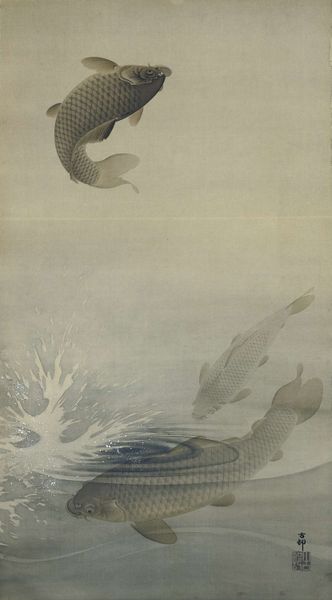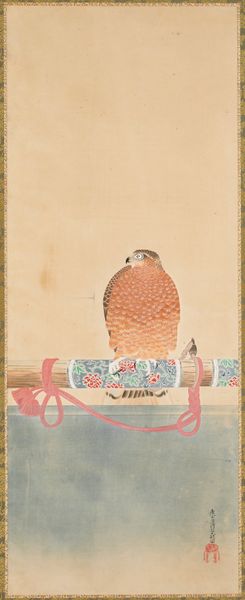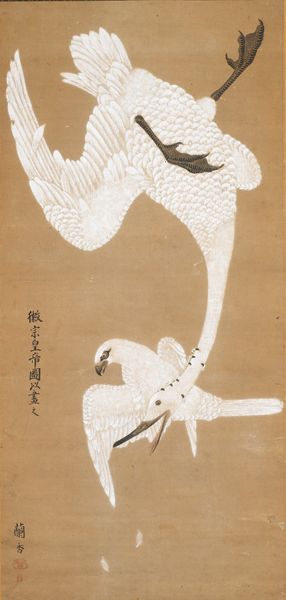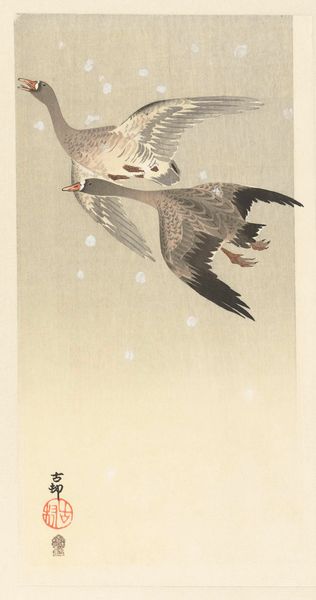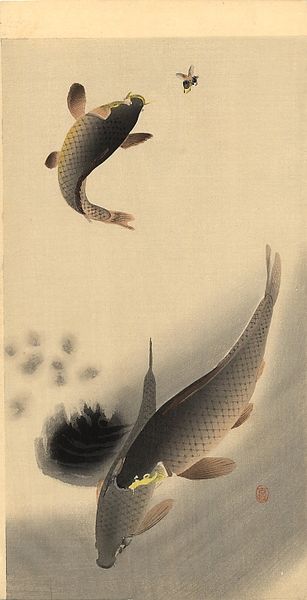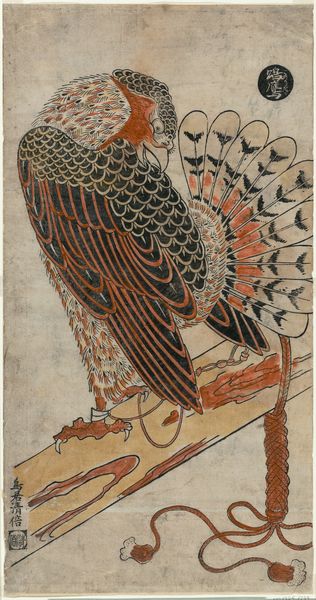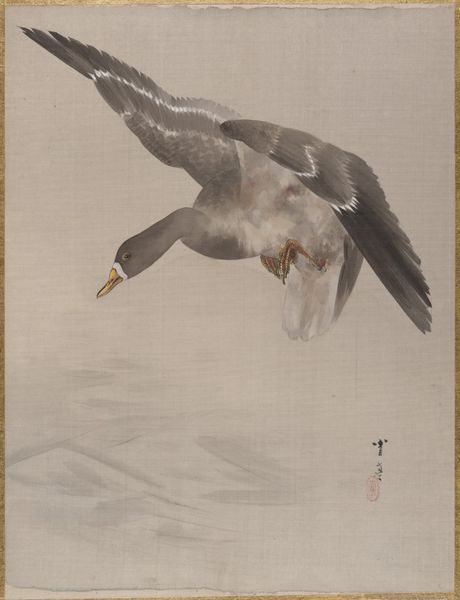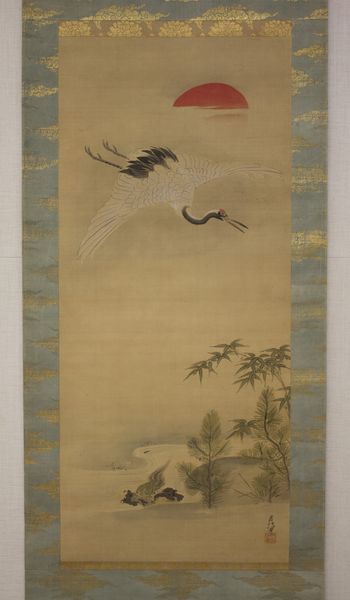
paper, watercolor, ink
#
portrait
#
water colours
#
animal
#
asian-art
#
ukiyo-e
#
japan
#
paper
#
watercolor
#
ink
#
coloured pencil
#
watercolor
Dimensions: 46 1/8 x 21 1/4 in. (117.16 x 53.98 cm)
Copyright: Public Domain
Editor: This is "Hawk," a 19th-century piece by Tosa Mitsuoki, rendered in ink and watercolor on paper. I'm struck by the stillness, the focused energy of the hawk, almost as if time has stopped. What do you see in this piece? Curator: I see a convergence of cultural symbolism, extending beyond mere avian representation. The hawk, in Japanese art, often embodies courage, strength, and keen vision, particularly for warriors. The seemingly simple composition speaks volumes. Editor: Could you elaborate on the symbolism beyond its general representation? Curator: Notice how the hawk interacts with what seems to be a tether. The visual metaphor of controlled power – strength bound or perhaps strength directed – offers a complex reading of societal hierarchies and the disciplined martial spirit prized in that era. Do you perceive how its gaze, coupled with the tether, communicates something beyond the literal image of a bird? Editor: I do now. It's less about just a hawk and more about restraint and focus, even destiny, maybe? Is that common for the Ukiyo-e style? Curator: Indeed. Ukiyo-e, while often depicting the fleeting pleasures of life, also served as a canvas for deeper cultural narratives. The hawk, captured in this intimate portrait, transcends a mere aesthetic object, becoming a symbol imbued with social meaning and individual aspiration. Editor: That makes the painting much richer. I hadn't considered how much symbolism could be packed into something so seemingly simple. Curator: The beauty of art lies often in its ability to compress complex ideas into seemingly straightforward images, doesn’t it? I learned new perspectives today! Editor: I agree. This makes me think about art history from an unexpected new point of view. Thanks for sharing these enlightening ideas!
Comments
No comments
Be the first to comment and join the conversation on the ultimate creative platform.
